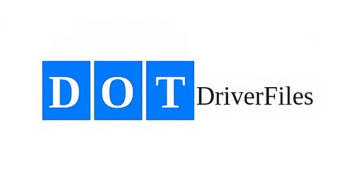Are you confident that your company is fully compliant with the Federal Motor Carrier Safety Administration (FMCSA) regulations? As a carrier, it is crucial to ensure that you meet all the necessary safety standards to maintain the integrity of your operations and protect the well-being of your drivers and the public.
The FMCSA requires all carriers issued a Provisional Certificate of Registration to undergo and pass a Safety Audit within the 18-month enhanced safety monitoring period. This stringent audit evaluates your compliance with key regulations, including driver qualifications, hours of service, controlled substance use testing, and vehicle maintenance. The audit process involves a thorough review of safety data, motor carrier documents, and an interview with a safety official.
Do you have what it takes to pass the FMCSA Safety Audit? Let’s explore the audit requirements, process, and the consequences of passing or failing this crucial assessment.
Key Takeaways:
- The FMCSA requires carriers to undergo a Safety Audit within the 18-month enhanced safety monitoring period.
- The Safety Audit evaluates compliance with regulations such as driver qualifications, hours of service, controlled substance use testing, and vehicle maintenance.
- Carriers are notified of the audit results within 45 days, and failure to pass may result in registration suspension or revocation.
- Passing the Safety Audit grants carriers permanent registration with continued monitoring under the Compliance, Safety, Accountability (CSA) program.
- Failing the Safety Audit can lead to U.S. DOT new entrant registration revocation and operations being placed out-of-service unless corrective actions are taken.
Undergoing the FMCSA Audit Process
During the Safety Audit, a licensed FMCSA or state-certified auditor reviews the carrier’s documentation and conducts interviews to assess compliance with federal regulations. Areas that may be reviewed include driver qualifications, duty status, vehicle maintenance, accident register, controlled substances, alcohol use, and hazardous materials. The auditor evaluates the carrier’s safety management controls and determines if they have the necessary processes in place for compliance.
The results of the Safety Audit are communicated to the carrier within 45 days, and further actions are taken based on whether the carrier passes or fails the audit.
For detailed information on the FMCSA audit checklist, audit process, audit manual, audit program, and audit protocol, refer to the FMCSA Audit Manual provided by the Federal Motor Carrier Safety Administration.
Steps in the FMCSA Audit Process:
- The audit begins with a review of the carrier’s documentation to ensure compliance with federal regulations.
- The auditor conducts interviews with key personnel to gather additional information and verify compliance.
- The auditor evaluates the carrier’s safety management controls, examining policies, procedures, and processes in place.
- The auditor determines if the carrier meets the necessary requirements for compliance.
Based on the results of the Safety Audit, the carrier will either pass or fail the audit. If the carrier passes, their safety performance will continue to be monitored throughout the new entrant period. If the carrier fails, corrective actions will need to be taken to address any identified non-compliance issues.
Consequences of Passing or Failing a Safety Audit
If your carrier successfully passes the Safety Audit, your safety performance will continue to be monitored throughout the 18-month new entrant period. This ongoing monitoring ensures that no additional safety concerns arise. As long as your carrier remains in compliance with the federal regulations, you will be granted permanent registration and be subject to monitoring under the Compliance, Safety, Accountability (CSA) program.
However, in the unfortunate event that your carrier fails the Safety Audit, serious consequences may follow. Your U.S. DOT new entrant registration could be revoked, and your operations might be placed out-of-service unless immediate corrective actions are taken. It is crucial to address any safety problems identified during the audit promptly. Failure to comply with the 16 specific regulations outlined in 49 CFR 385.321 will automatically result in the failure of the audit.
To avoid the potential consequences of failing a Safety Audit, it is essential to prioritize safety and ensure compliance with all applicable regulations. By proactively addressing any safety issues, you can maintain compliance and continue to operate without interruption.





